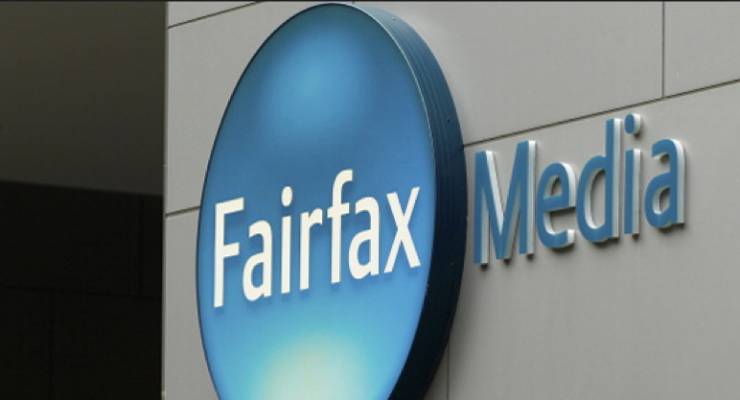
On the face of it, Fairfax Media’s interim results — including the confirmation of the Domain spin-off — with lower profits and another small dividend for long-suffering shareholders held good news. No more big write-down bills, losses or red ink. But, as usual, there were enough warning flags in the result to raise concerns and ask whether Domain is being launched, as a standalone, into uncertain waters.
For example, CEO Greg Hywood revealed that trading so far in 2017 (the company’s second half) had revealed a 6% fall in revenues in February, against February 2016. Plus: “Trading in January saw revenues around 10% below last year in a slower than usual start across the media industry.” A year ago Hywood said that in the first seven weeks of 2016 revenues were down “1% to 2%”. Overall, revenues fell around 5% in the six months to December 31, to just over $900 million. If sustained over the rest of the period to the end of June, Fairfax is facing a larger fall in revenues that it would have been budgeting for.
And this all includes Domain’s contribution. A year ago, Hywood said Domain was showing a 25% rise in “organic revenues” in the early weeks of the year. This morning there was no mention of “organic” revenue growth at Domain, just the cautious, “new real estate listings have seen some early signs of improvement in February following the weak FY17 H1 performance” (when they fell 7%). In fact, Domain seems to have hit something of a wall. The deal to spin off Domain as its own company will take most of this year to complete. Australian Tax Office and Fairfax shareholder approvals will be needed for the deal to be done; if the property market slows further as banks lift rates and tighten the screws on investors, the listing could weaken again.
In the first half of 2016-17, Domain’s earnings before interest, tax, depreciation and amortisation (EBITDA) fell 12.8% to $57.3 million, down from $65.7 million in the first half of 2015-16. (In the teleconference, Hywood didn’t mention that the EBITDA figure in the latest period was down on a year ago, when he was running through the results at the start. He did say that the company “was still investing in Domain through the listing cycle”.) Overall, real estate listings fell 7% for the half year, with the falls concentrated in Sydney and Melbourne, similar to what rival REA Group experienced.
In the first half of 2015-16, Domain’s EBITDA of $65.7 million contributed more than 40% to Fairfax’s EBITDA of $161.1 million. This half-group EBITDA fell 9.9% to $155.1 million, and Domain’s share fell to 39.4%.
So Fairfax is looking to separate Domain at an uncertain time in the real estate market.
Macquarie Group is advising Fairfax on the partial spin-off of 60-70% of Domain, and Hywood said “it was the present intention [that] no new capital will be raised” by the Domain sale, which will end speculation from greedy shareholders and super funds looking for a capital return from the property group split. Watch for the moans and groans from analysts and journalists at The Australian.
[Fairfax splits, many think News Corp should follow, but will stubborn old Rupert allow it?]
But investors and analysts were not much interested by the financial nitty gritty (or the fate of the newspaper businesses really, judging from the lack of comments on this morning’s teleconference with CEO Greg Hywood). There was only one question about keeping the newspapers in print. In reply to that, Hywood said “six- or seven-day publishing is the best commercial outcome for shareholders. That may change, but not yet.” And at the end he pointed out that the print businesses still generated good returns and went on to describe Fairfax as a “digital business”.
In print media, Hywood said the company was pleased with the performance, especially in digital (up 22% to $22 million for the half, and 226,000 digital subscribers across The Age, The Sydney Morning Herald and the Australian Financial Review). Print ad revenues fell 16% in the quarter, but circulation revenues rose 1% thanks to the rise in paid digital subscriptions.
Stan, the streaming video with Nine Entertainment, is also a success — more than 700,000 local subscribers (it battered Presto, Foxtel/Seven West Media’s joint venture into submission, generating millions of dollars in losses), and Hywood says it is on track to be at “cash flow break-even in fiscal 2018”. That was probably the most positive part of today’s announcement and briefing.








Would that “organic” revenue be, as in, bullshit?
Hywood, along with the gone but unlamented Goodsir, were pretty crook reporters, not an inquisitive bone in their writing hands.
Is that equivalent to selling the silverware?
If Domain is sold off, will that see the end to the unrelenting stream of property boosterism from the journalists, who have never heard of a time that wasn’t ‘a good time to invest in property’?
I agree, DB, as an Age subscriber I am worried that there can’t be impartial commentary on the mess the property market is in.